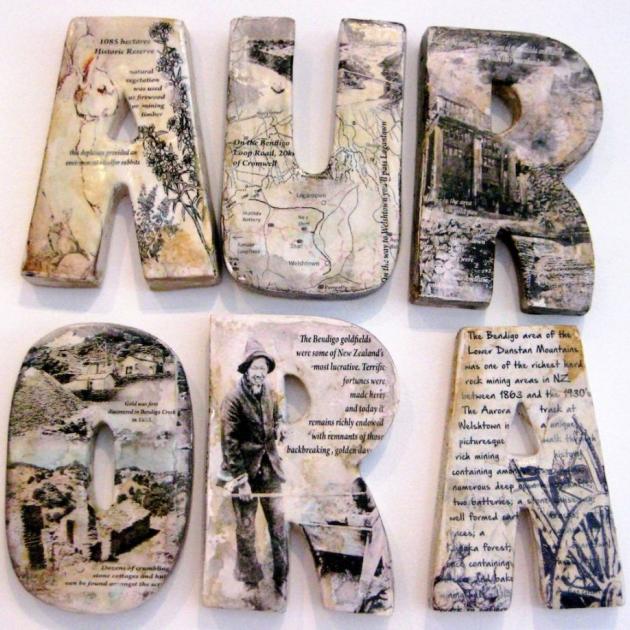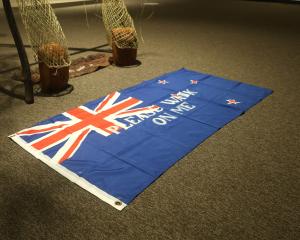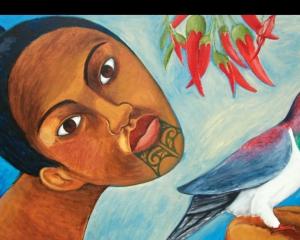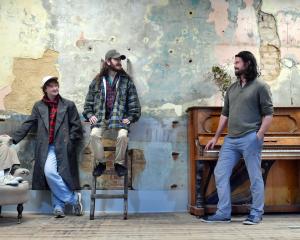
''Construction'' is an appropriate word for the work of Louise McRae.
Each image is built from many pieces of wood, the timber painted, then cut in shapes of different sizes, and reassembled to form a picture plane of varied heights, tones and shadows.
The result can look architectural, as if the three-dimensional square is a cross-section from a building site.
Other pieces appear almost topographical, like aerial maps of land formations or cityscapes.
One of the larger works, Song for Tane, has a paint splash and a geometric effect of textile design.
Part of the impact is in the sheer number of pieces stacked in gleeful disorder like children's blocks or a poorly assembled jigsaw puzzle.
The effect across a large surface plane is so textural it is difficult to restrain the impulse to run a hand over the uneven ends.
Surprisingly, however, the six ''mini'' cubes are equally effective despite their comparatively small size.
The use of recycled native timber is a deliberate and personal choice for the artist.
Her grandfather and great-uncles were loggers who supported their family through the forestry industry, in the process deconstructing, as it were, large fields of kauri.
As a ''small way of making amends'', McRae uses offcuts that might otherwise be burned and builds something beautiful from them, a conscious process of creation rather than destruction.

Take a large group of artists, inspire them with a common theme, and the results are fascinating.
The aim of ''Project Aurora'' was to create a cohesive narrative from a collective of very different styles and thought processes.
The connective link was the Aurora Track in historic Bendigo, an hour-long circuit that passes through what was once thriving mining territory.
The artists explored the track over a period of six months before each attempted to communicate their experience.
The 31 works on display span photography, painting, drawing, sculpture and ceramics to tell the continuing story of a small and vibrant landscape: past, present and future.
Jillian Porteous and Annemarie Hope-Cross present some of the most emotionally gripping imagery, turning their attention to the perilous existence lived by the pioneer women.
Porteous' raku figurines stand stoic and silent, breakable yet enduring, while Hope-Cross' photogenic drawings of the ceramic women are ethereal and atmospheric. With an almost chalky appearance, the wraith-like subjects might be century-old ghosts captured on film.
In small glass panels, oil painter Gail de Jong conveys a sense of dust and heat, using figures moving sinuously in a tribal dance to depict the energy of the miners, ''the polarity of jubilation and despair''.
Marion Vialade's print of an archaeology field report and rabbit tracks through the snow is another favourite.

Russian-born artist Ilya Volykhine began painting full-time in 1995 while living in New York, coming to New Zealand via Australia, where he received the Archibald Award.
Painting in a deliberately naive style, with awkward angles, washes of colour, and bodies with elongated or foreshortened limbs, Volykhine tries to create without a conscious plan, instead responding to the world around him, letting his hand move and waiting for something to ''spark''.
''Art is forever and life is short,'' he states.
''You make people immortal by putting them in your painting.''
The works attempt to capture and preserve the small important details of the life we are living now, the feelings and actions of individuals within a shared space.
The element of the bizarre in the collection might have repelled but instead reaches out and fascinates.
Finding it easier to communicate through his brush than with language, Volykhine nevertheless includes the written word in many of his pieces.
The most intriguing images, such as In Search of the Miraculous and Eudyptula Minor - Little Blue Penguin, position their distorted human subjects against a background of letters, either excerpts from a favourite poet or cuttings from correspondence with the artist's mother, words sent from Russia and incorporated into Volykhine's work, literally wrapping around, framing and holding the emotions that he tries to portray.












